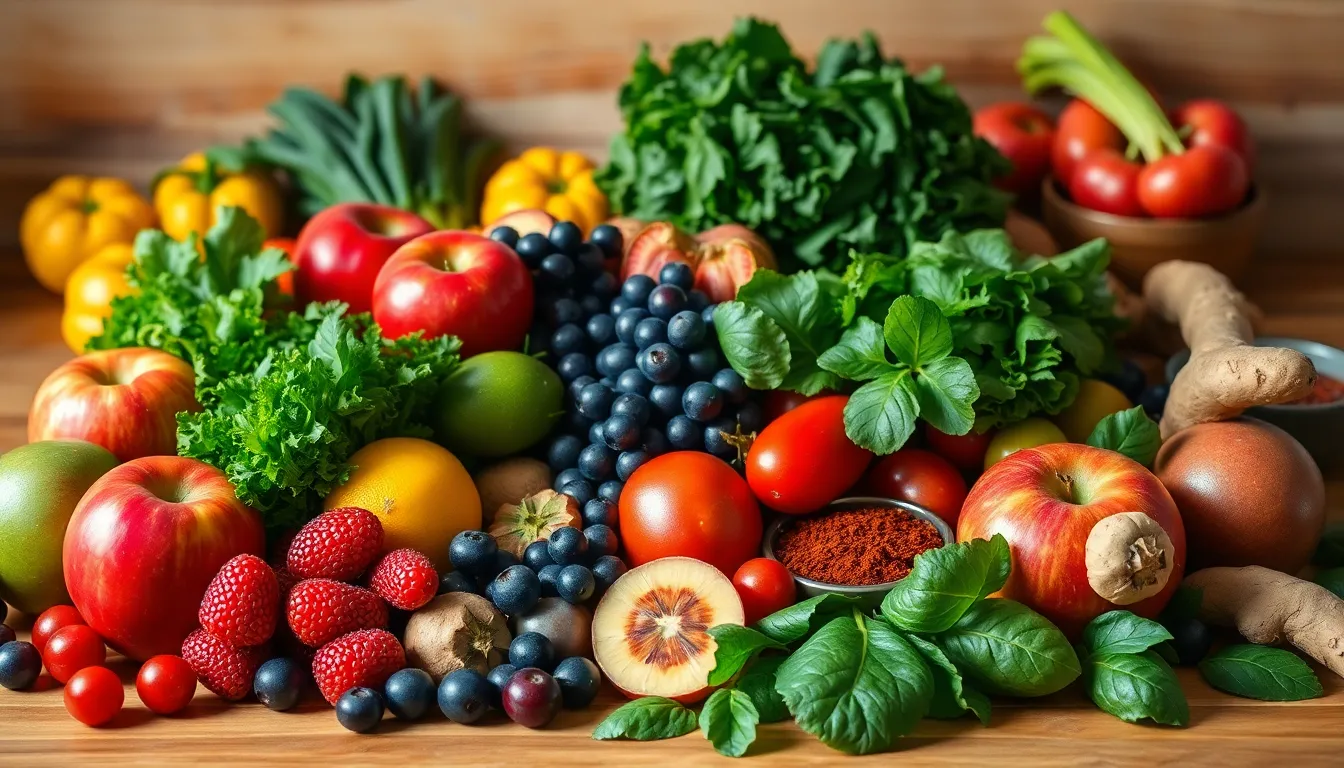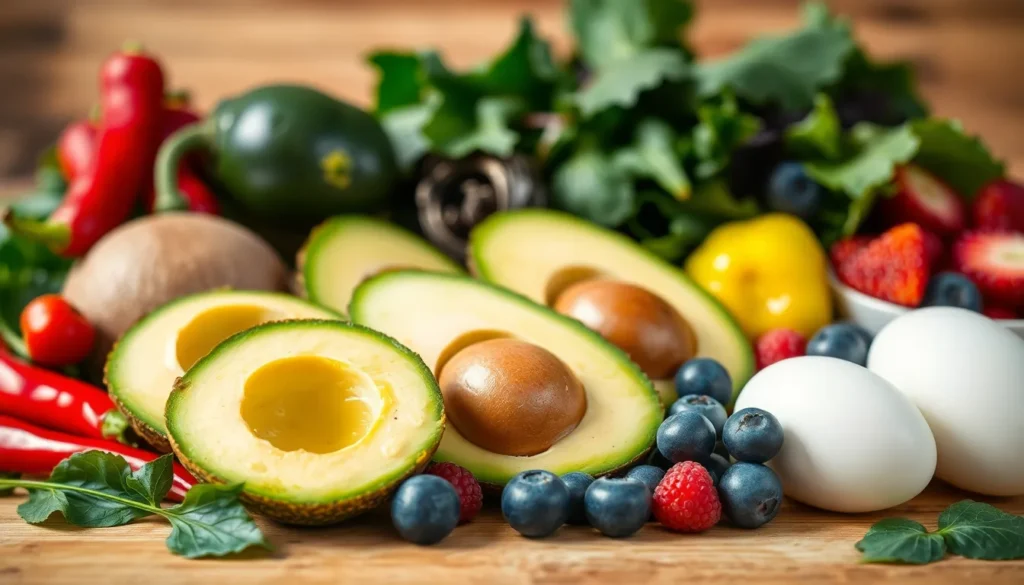In today’s fast-paced world, many are seeking ways to rev up their metabolism and enhance their energy levels. The right foods can play a crucial role in this process, transforming the way the body burns calories and utilizes energy. Incorporating metabolism-boosting foods into one’s diet can lead to improved weight management and overall vitality.
From spicy peppers to protein-rich options, certain foods have the power to ignite metabolic processes. These nutrient-dense choices not only support weight loss efforts but also provide essential vitamins and minerals. By understanding which foods can help kickstart metabolism, individuals can make informed decisions that contribute to their health and wellness goals.
Table of Contents
ToggleWhat Are Boost Metabolism Foods?
Boost metabolism foods are those that enhance metabolic processes, increasing energy expenditure and aiding in weight management. Spicy foods, such as cayenne and jalapeños, contain capsaicin, which elevates the body’s temperature and accelerates calorie burning.
Protein-rich foods, including lean meats, eggs, and legumes, play a crucial role in this category. They require more energy to digest compared to carbohydrates and fats. This process, known as the thermic effect of food, can raise metabolism significantly.
Green tea and coffee are also valuable in this context. Both beverages contain caffeine, which stimulates metabolism and promotes fat oxidation. Additionally, green tea features catechins, antioxidants that further boost metabolic rate.
Incorporating foods high in healthy fats, such as avocados and nuts, supports satiety and can lead to healthier eating patterns. These fats promote the absorption of fat-soluble vitamins, benefiting overall health.
Foods rich in dietary fiber, like whole grains and fruits, help regulate digestion and maintain steady energy levels. Adequate fiber intake can prevent overeating, contributing to effective weight management strategies.
By consuming these metabolism-boosting foods, individuals can enhance their overall energy levels and support their health and wellness efforts.
Types of Boost Metabolism Foods

Numerous foods can significantly enhance metabolism, leading to increased energy expenditure and improved weight management. The following categories highlight key types of metabolism-boosting foods.
Proteins and Their Impact
Proteins play a crucial role in boosting metabolism due to their high thermic effect. Lean meats, eggs, fish, and legumes demand more energy for digestion, potentially increasing calorie burning by 15-30%. Incorporating these protein-rich options into meals can enhance satiety and support muscle maintenance, further contributing to metabolic health.
Spices That Heat Things Up
Spices such as cayenne, jalapeños, and ginger elevate metabolic rates through their active compounds. Capsaicin in spicy peppers can increase body temperature, leading to a rise in calorie expenditure. Ginger aids digestion and potentially boosts calorie burning as well. Adding these spices to meals can create flavorful dishes while supporting metabolic functions.
Fruits and Vegetables for Metabolism
Fruits and vegetables offer essential vitamins, minerals, and fiber, which benefit metabolic processes. Foods like apples, berries, and leafy greens provide antioxidants and can help regulate digestion. Cruciferous vegetables like broccoli and Brussels sprouts also contribute to nutrient intake while promoting increased energy levels. Consuming a variety of these nutrient-dense options supports overall health and metabolic efficiency.
How to Incorporate Boost Metabolism Foods
Incorporating metabolism-boosting foods into daily meals enhances energy levels and supports overall health. The following sections provide meal ideas and practical tips for regular consumption of these beneficial foods.
Meal Ideas and Recipes
- Breakfast Options: Include scrambled eggs with spinach and tomatoes. Add a side of avocado for healthy fats. Opt for oatmeal topped with berries and a sprinkle of cinnamon for extra flavor and nutrients.
- Lunch Combinations: Prepare a quinoa salad with black beans, chopped peppers, and a lemon vinaigrette. Incorporate grilled chicken or fish for a protein boost. Enjoy a vegetable stir-fry with broccoli, carrots, and ginger for added metabolism benefits.
- Snack Suggestions: Snack on a handful of almonds or walnuts. Pair Greek yogurt with sliced fruit and a drizzle of honey. Include baby carrots and hummus for a nutritious, energy-boosting option.
- Dinner Ideas: Create a grilled salmon plate served with roasted Brussels sprouts and sweet potatoes. Use spices like cayenne or garlic for flavor. Make a whole grain pasta dish with lean turkey meatballs and a side of mixed greens.
Tips for Daily Consumption
- Plan Meals: Schedule meals ahead to ensure inclusion of metabolism-boosting foods. Use a weekly planner to mix and match recipes effectively.
- Keep Ingredients Handy: Stock the pantry and refrigerator with essential items such as legumes, spices, fruits, and vegetables. This encourages spontaneous healthy choices.
- Start Slowly: Incorporate one or two metabolism-boosting foods into the diet each week. This gradual approach allows for adjusting taste preferences and habits.
- Stay Hydrated: Drink green tea or coffee in moderation instead of sugary beverages. These drinks offer metabolism-boosting properties while providing hydration.
- Prepare Snacks: Prepare portable snacks, like pre-portioned nuts or cut vegetables, to maintain energy levels throughout the day.
The Science Behind Boosting Metabolism
Metabolism refers to the chemical processes in the body that convert food into energy. Certain foods significantly influence these processes, enhancing energy expenditure. The thermic effect of food (TEF) plays a pivotal role in this relationship, where the body burns calories during digestion and absorption. Foods with a high TEF, such as protein, can increase calorie burning by 15-30%.
Protein-rich foods, including lean meats, fish, eggs, and legumes, require more energy for digestion compared to carbohydrates and fats. Incorporating these foods into meals promotes muscle maintenance and satiety. For instance, consuming 100 grams of protein may burn 25-30 calories during digestion.
Spicy foods, like cayenne and jalapeños, contain capsaicin, which elevates body temperature and heightens metabolism. Capsaicin boosts calorie burning for several hours after consumption, resulting in a potential increase in daily energy expenditure.
Green tea and coffee also stimulate metabolic functions. Green tea contains catechins, which enhance fat oxidation and increase metabolic rate. Studies suggest that green tea can elevate metabolism by 4-5%, while caffeine in coffee improves energy levels and fat burning.
Healthy fats from foods such as avocados and nuts support metabolism by promoting satiety. These fats slow digestion and contribute to sustained energy, reducing overall calorie intake. Fiber-rich foods, including whole grains, fruits, and vegetables, regulate digestion and help maintain steady energy levels. Fiber promotes feelings of fullness, aiding in weight management efforts.
Incorporating various metabolism-boosting foods into daily diets enhances overall energy expenditure and supports effective weight management. The interplay of these foods within a balanced diet creates a sustainable approach to health and wellness.
Incorporating metabolism-boosting foods into daily diets can significantly enhance energy levels and support weight management. By choosing options rich in protein, healthy fats, and fiber, individuals can optimize their metabolic processes. Spices and specific beverages further ignite these processes, making healthy eating not just beneficial but also enjoyable.
With practical meal ideas and strategic tips, anyone can seamlessly integrate these foods into their routine. Embracing this approach fosters a sustainable path toward improved health and wellness, empowering individuals to make informed dietary choices that promote vitality and well-being.








